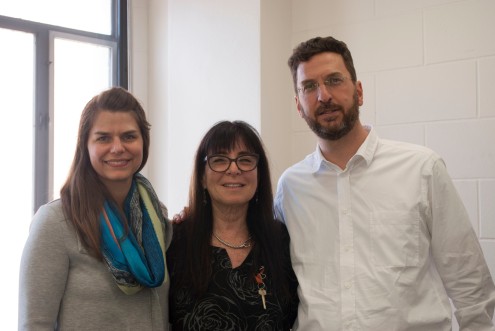My official title during my Spring 2017 teaching appointment at the Global Studies program – Visiting Professor – was in some ways misleading. The University of MN campus was not in any form new to me. I trod its paths as a graduate student back in the seventies, and later as a faculty member in the Classical and Near Eastern Department in the nineties. I was glad to be invited to revisit a familiar turf, not as a momentary visitor, but as a staff member. Embraced by Chair of CHGS, Professor Alejandro Baer, and ever-accommodating Program Coordinator, Jennifer Hammer, I plunged into the University’s old and new teaching routines with a little side splash. Challenges were encountered on unexpected fronts such as the likes of decoding the mechanics of discourse between computers whose compatibility was unnatural – a “Hebrew Speaking” PC and the campus’ Apple lingo. Or the ever-astonishing fact of a May 1st snow storm. Even as a veteran of a dozen winters I was caught by surprise. Perhaps the twenty warm years since I left the campus, and the Israeli scorching sun must have affected my brain’s memory cells. I was also surprised by the sign over the entrance door to Classroom 1-111 on the first floor of Hanson Hall, which read: The Dairy Queen Class. Quite ironic, I thought to myself, for a course on the history of the Holocaust. Evidently no prank, just one coincidence of what life is made of.

At the beginning of last spring, as I was trying to overcome these initial hurdles, I stood in front of some 30 students, who enrolled for a two and a half hour long class on the history of the Holocaust through works of art created by Jewish artists living under Nazi occupation. The course was scheduled in the late evening. Will I be able to keep their attention? Will I be able to entice and challenge their past knowledge, perspectives, and presuppositions as to what the term Holocaust entails? The faces observing me, as much as I did them, were to my great satisfaction mostly young, and to my great delight of versatile ethnic and racial backgrounds. I was not going to preach to the choir, but rather confront fresh young unchartered minds.
The task was ambitious, and class sessions were often packed to the brim with information and images. At times, the visual brutality of the reality of the Holocaust peered from the screen – shocking and disturbing. The message of art as valid historical evidence was slowly making its presence. The students’ inquisitive eyes, sometimes veiled with tears, conveyed all that I aspired for. I was reaffirmed of the power of the artistic expression to tell the perspective of the individual victim, and to bear witness to a historic event of an unmeasurable impact on the annals of humanity.
I am thankful for the opportunity given to me to share my perspective with University of MN students, as well as the wider public in the many lectures scheduled during my short tenure. The strong reactions by the listeners’ body is my true reward. It affords me the ability and desire to continue addressing audiences, specifically by making mute art speak for those who were persecuted and murdered during the Shoah. A worthy calling.
Yehudit Shendar is retired Deputy Director and Senior Art Curator at Yad Vashem (Israel), and a current member of the Schwabinger Kunstfund, the international taskforce of experts researching the Cornelius Gurlitt cache of Nazi looted art, unveiled in Munich in 2013.

Comments